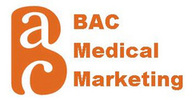Aetna's CEO recently said that the Obamacare insurance exchanges are in a "death spiral."
Cynthia Cox, of the "non-partisan" Kaiser Family Foundation responded that the insurance exchanges "are not really in a death spiral yet." She would know more than the Aetna CEO whose company lost $450 million in the Obamacare individual market last year.
I have avoided the term "death spiral" because it has become an overly politicized term most often used by people who don't really understand it.
A "death spiral" is a technical term that comes from the days when carriers could underwrite risk and exclude sick people from their programs and is analogous to the process of an airplane climbing to a high altitude, losing control, and, being unable to regain lift, spiraling down to the ground.
It describes a failing block of business:
- That grew quickly (gained altitude) likely because it was underpriced relative to the competition;
- Then had to receive big rate increases in order to be properly priced;
- Whereupon the healthiest, who could move because they could clear another company's underwriting, quit it and joined a lower priced program that charged the healthy less;
- Leaving an even sicker block locked into it because they couldn't qualify for another plan;
- While each successive annual rate increase saw more and more healthy people leave while the sickest stayed (the spiral);
- Until the block crashed and had to be abandoned.
The following chart shows the percentage of subsidy eligible people who signed up for coverage in the first year––2014––broken down by their income as a percentage of the federal poverty level (FPL).
Remember, insurance companies ideally want to see 75% of an eligible group sign up in order to have enough healthy people paying premium to pay for the sick.
For 2017, the Obamacare exchange enrollment was flat on a national basis––so this picture hasn't gotten any better or any worse since the 2016 election.
Comparing the two charts you can see two things:
- The Obamacare insurance exchanges started out in 2014 with an enrollment for the poorest––100% to 150% of the federal poverty level––in great shape with 76% of the eligible signing up and growing to 81% in 2016, attributable to the lowest premiums and out-of-pocket costs these people are eligible for. This little corner of Obamacare is a healthy and sustainable block of business.
- But between 151% and 400% of the FPL, only about 30% of the eligible signed up in 2014 and that number hardly budged by 2016––the exchange enrollment in these brackets never approached a sustainable level.
I am reminded of this February 2014 Politico headline describing the first open enrollment: "Obamacare finally clears the tower." Actually, Obamacare never cleared the tower much less gained enough altitude to come spiraling down!
When the Obamacare exchanges launched in 2014, the first year enrollment already looked like the end of a death spiral. Any new block that only signed up 30% of the eligible would have been immediately shut down as a failure if a single insurance company had operated it.
Ms. Cox also said, "there isn't evidence that the pool of people is getting sicker." Ms. Cox, with only 30% of the eligible ever signing up between 151% and 400% of the FPL, this block was already about as sick as it could get!
You can fault the Republicans for adding fuel to the already burning Obamacare fire, but you can't claim this program was sustainable before November 8th, 2016.
But even this analysis misses the other half of the market.
In 2016, virtually half of the market was purchased off of the exchanges––Obamacare compliant on and off exchange plans all have to be designed and rated the same.
We have seen the disastrous carrier by carrier 2015 results from the federal reinsurance program that included both off-exchange and on-exchange business. We also know the off-exchange results were bad enough to produce the big 2017 rate increases. And, we do know that these off-exchange people don't get a subsidy and have to pay the full price these big rate increases developed for 2017. The easy prediction is to say that those increases have to be pushing a lot of healthy people, who don't now use their insurance, off of their coverage.

 RSS Feed
RSS Feed































